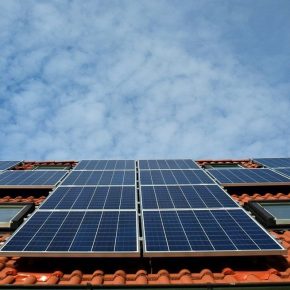
Why are EPC ratings influencing people to buy new-build homes?
As a result of the cost-of-living crisis and worries over climate change, more individuals are considering the energy efficiency of a property when making a purchase. New-build homes in particular have higher EPC ratings, which means they are more energy-efficient.
This is beneficial to homeowners and can provide lots of opportunities to save money and drive sustainability. Consequently, there has been a rise in the demand for new-build properties.
This article looks at the reasons why new-build homes are shaping the future and why purchasing one could be a great investment for you.
EPC ratings are at the top of the wish list
Energy Performance Certificates (EPCs) are required from properties when they are built, sold or rented. Potential buyers must be made aware of the rating before the property is marketed. The rating can range from A to G, with A being the most efficient. It is based on the amount of energy used in the property and the level of carbon dioxide emissions released per year.
EPC ratings are now a priority for those looking to buy a home, with a fifth of Brits saying they wouldn’t consider a house with an EPC rating lower than C. The lower the energy rating, the more energy the property will use and so maintenance costs will likely be much higher.
Newer Homes, Higher EPC ratings
Last year, more than 80% of new-build properties were given an EPC rating of A or B. By investing in a new-build property with a higher band energy rating, homeowners can rest assured that their home is more energy efficient than the majority of older properties. It also ensures that in-built energy efficiency is there for the duration of the property.
Saving is caring
These higher energy efficiency ratings can save homeowners on average around £2,600 a year on energy bills compared with older properties, which is a huge saving, particularly if money is already tight. Lower running costs are actually more attractive to potential buyers than the aesthetics of a home, such as the size of the garden.

When it comes to buying a home, these ratings can help you to qualify for a new green mortgage discount. Essentially, your mortgage lender will reward you for making your property greener, either with a better interest rate or cashback on your mortgage.
The future is green
Decarbonising the property market has only just started and the government has plans to increase the energy efficiency of new homes further. By 2025, it is predicted that new-build homes will produce 75-80% fewer carbon emissions than those under the current regulations.
Latest news

9th April 2025
Insight Data: Smart spending - how targeted marketing offsets rising costs
As ‘Awful April’ lands, fenestration businesses must use data-driven marketing to maximise impact, cut waste and stay ahead, says Alex Tremlett, Insight Data’s commercial director…
Posted in Articles, Building Industry News, Building Products & Structures, Building Services, Doors, Glass, Information Technology, news, Posts, Research & Materials Testing, Windows
9th April 2025
Saniflo: Retrofit 2025 at the Building Centre
Saniflo is delighted to announce a six-month collaboration with the Building Centre as a Principal Partner for ‘Retrofit 2025 – What’s Stopping Us’.
Posted in Articles, Bathrooms & Toilets, Bathrooms, Bedrooms & Washrooms, Building Industry Events, Building Industry News, Building Products & Structures, Building Services, Case Studies, Drainage, Exhibitions and Conferences, Facility Management & Building Services, Innovations & New Products, Interiors, Pipes & Fittings, Plumbing, Restoration & Refurbishment, Retrofit & Renovation
9th April 2025
FIT Show Launches Comprehensive CPD Learning Programme - Registration Now Open!
FIT Show, the UK’s leading trade event for the window, door, flat glass, hardware, components, and roofing industries, has unveiled its extensive learning programme for the 2025 event.
Posted in Architectural Ironmongery, Articles, Building Industry Events, Building Industry News, Building Products & Structures, Building Services, Building Systems, Continuing Professional Development (CPD's), Doors, Exhibitions and Conferences, Glass, Glazing, Innovations & New Products, Posts, Restoration & Refurbishment, Roofs, Seminars, Timber Buildings and Timber Products, Training, Windows
8th April 2025
First look at industry speakers for GEO Business 2025
GEO Business, the UK’s premier geospatial event, is set to return to ExCeL London on 4 – 5 June 2025, bringing together the brightest minds in the industry.
Posted in Articles, Building Industry Events, Building Industry News, Building Products & Structures, Building Services, Exhibitions and Conferences, Information Technology, Innovations & New Products, Restoration & Refurbishment, Retrofit & Renovation, Seminars
 Sign up:
Sign up: